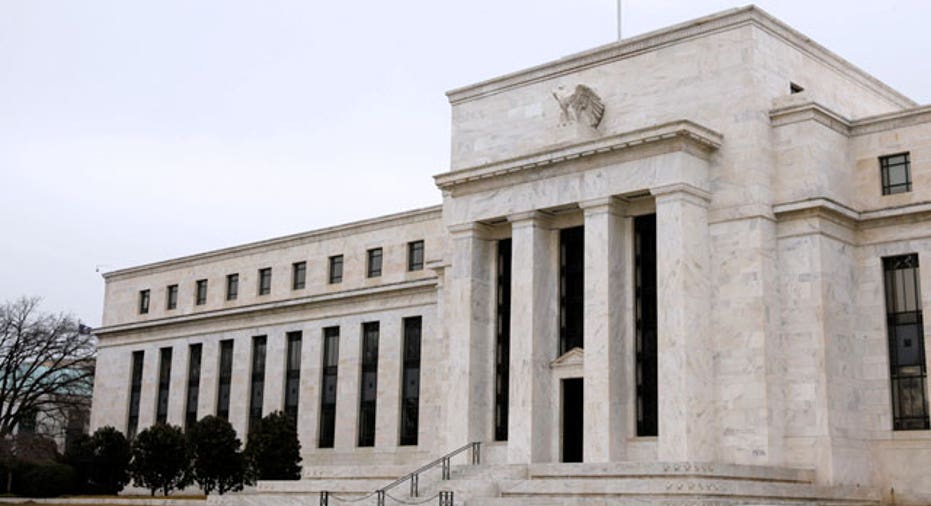What to Watch in the Fed Minutes

Federal Reserve officials left their benchmark short-term interest rate unchanged at their meeting Sept. 20-21 but left open the door to lifting it later this year. Their postmeeting statement indicated division among policy makers about when the central bank should next raise interest rates. The minutes of the meeting, to be released Wednesday at 2 p.m. ET, are likely to provide more detail on the internal debate. Here are five things to watch for.
Rate-Increase Timing
After the Fed's September gathering, Chairwoman Janet Yellen said the case for an increase has strengthened, but officials decided "for the time being" to wait for further evidence of rising inflation and continued jobs-market strength. The minutes will likely provide details on the Fed's internal discussions about when to next tighten borrowing costs. Although officials insist that every meeting is a "live" possibility for interest-rate moves, economists and analysts say the rate-setting Federal Open Market Committee is highly unlikely to raise interest rates at its Nov. 1-2 meeting since U.S. presidential elections fall a week later. Any mentions of upcoming meetings—like the one in December—or clues about the timing of future increases will be closely eyed. Discord in the Ranks
Fed Vice Chairman Stanley Fischer said Sunday the decision to hold interest rates steady at the central bank's September meeting was a "close call," but divisions over the timing of the next interest-rate increase deepened at the last meeting.
Three regional bank presidents—Kansas City's Esther George, Cleveland's Loretta Mester and Boston's Eric Rosengren—dissented because they wanted to raise rates immediately, a rare level of disagreement under Ms. Yellen's leadership. At the same time, the summary of economic projections released after the meeting indicated that three officials don't expect any rate increases at all this year.
The proponents of raising rates now say the economy is near full employment and inflation is ticking higher. Opponents don't want to move until they see stronger economic growth and faster inflation. The compromise forged at the meeting was to stand pat but signal that a rate increase was likely by year's end. Look to the minutes for details on how the two sides framed their arguments and how they struck the agreement. Balance of Risks
Fed officials spent the earlier part of the year fretting about a range of global problems, including Britain's decision to exit from the European Union and China's uncertain economic outlook. In its September policy statement, the Fed said risks to the outlook had become "roughly balanced," meaning the economy had just as good a chance of exceeding the Fed's growth estimates as of falling short. The minutes will likely lay out the factors behind that more-upbeat assessment.
Politics Amid intense scrutiny of the Fed during the current presidential election campaign, it is highly unlikely political considerations about monetary policy got a mention at the September meeting, but it will still be something to keep an eye on. Chairwoman Janet Yellen said at her press conference that "partisan politics plays no role in our decisions about the appropriate stance of monetary policy." She also explicitly said officials "do not discuss politics in our meetings" and assured "that you will not find any signs of political motivation when the transcripts are released in five years." Nonetheless, policy makers might have discussed whether political uncertainty is reining in investment spending.
Growth The minutes could look somewhat stale, since the meeting took place before the middling September jobs report was released last week. But they will show how officials viewed the labor market's health before they saw those figures. The September Fed statement gave a fairly upbeat assessment of economic growth, saying it had "picked up from the modest pace seen in the first half of this year." Since the meeting, data have been more downbeat. The Atlanta Fed's GDPNow tracker estimate for third-quarter gross-domestic-product growth dropped to a 2.4% annual rate from 2.9%, for instance. On top of that, employers added 156,000 jobs in September—fewer than the 170,000 expected by economists. The labor force—the employed plus those actively seeking work—posted the biggest 12-month gain since the first tech boom in 2000. Growth in the labor force supports the view that the economy still hasn't reached full employment, which could make the Fed more reluctant to raise rates any time soon.
By Harriet Torry